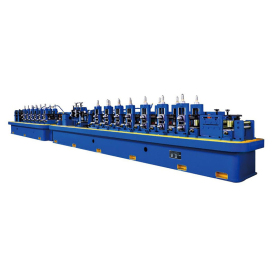In the ever-evolving landscape of manufacturing, precision and efficiency are of utmost importance. One innovative technology that has gained significant attention in recent years is the Precision Flying Saw Machine. This cutting-edge device is revolutionizing the way materials are processed, offering enhanced accuracy, speed, and versatility for various applications across different industries. In this article, we will delve into the specifics of Precision Flying Saw Machines, their workings, advantages, and the diverse realms in which they play a crucial role.
Understanding Precision Flying Saw Machines
A Precision Flying Saw Machine is designed to cut materials with extreme accuracy while in motion, as opposed to traditional saws that require the material to be stationary. These machines are capable of cutting various materials, including metals, plastics, and composites, making them indispensable in sectors such as manufacturing, automotive, aerospace, and construction.
The typical configuration of a Precision Flying Saw Machine includes a high-speed saw blade mounted on a sophisticated mechanism that allows for both linear and angular movements. The machine utilizes advanced control systems, which orchestrate the speed of the saw and the material feed rate, ensuring that every cut is precise and clean, resulting in minimal waste.
Key Features and Innovations
1. **High-Speed Operation**: One of the standout features of a Precision Flying Saw Machine is its ability to operate at high speeds, drastically reducing the cycle time for cutting processes. This rapid operation is beneficial in high-volume production environments where efficiency is critical.
2. **Enhanced Accuracy**: The machine boasts advanced technological integrations, such as servo motors and CNC (Computer Numerical Control) systems, which ensure that cuts are made to the exact specifications. This level of precision minimizes the need for post-processing and enhances the overall quality of the final product.
3. **Versatility**: Precision Flying Saw Machines are designed to handle a broad range of materials, which allows manufacturers to diversify their production line without the need for multiple cutting machines. Whether cutting through steel, aluminum, or composite materials, these machines can be tailored to meet specific production needs.
4. **User-Friendly Interface**: Modern machines come equipped with user-friendly software that simplifies the input of design specifications and cutting patterns. Operators can easily program the machine, thereby significantly reducing the learning curve and optimizing overall productivity.
Applications Across Industries
The applications of Precision Flying Saw Machines are extensive, touching various sectors. Here are some primary areas where these machines are making a notable impact:
1. **Metal Fabrication**: In industries where metal components are fabricated, such as automotive and aerospace, Precision Flying Saw Machines provide the accuracy needed for cutting intricate shapes and sizes. This precision is critical for parts that will be assembled together, ensuring that they fit perfectly during installation.
2. **Production of Structural Components**: In the construction industry, these machines are used to cut structural components like beams, columns, and supports. The ability to make accurate cuts allows for better fitting and reduced wastage of materials, ultimately contributing to cost savings.
3. **Composite Material Cutting**: As composite materials become more prevalent in manufacturing, especially in aerospace and automotive applications, Precision Flying Saw Machines are ideal for cutting these materials without compromising structural integrity.
4. **Custom Fabrication**: For companies that require custom parts, Precision Flying Saw Machines enable quick adjustments to cutting patterns, allowing for batch production of specialized components without the need for extensive setup changes.
Benefits of Adopting Precision Flying Saw Machines
Adopting Precision Flying Saw Machines in manufacturing processes offers several key benefits:

Exploring the Advancements and Applications of Precision Flying Saw Machines in Modern Manufacturing Industries
1. **Cost Efficiency**: By reducing material wastage and enhancing production speed, these machines contribute to lower operational costs.
2. **Improved Product Quality**: The precision cutting capability reduces errors and enhances the quality of finished products, which can lead to higher customer satisfaction and reduced returns.

Exploring the Advancements and Applications of Precision Flying Saw Machines in Modern Manufacturing Industries
3. **Enhanced Sustainability**: By minimizing waste and utilizing energy-efficient technologies, Precision Flying Saw Machines can help manufacturers adopt more sustainable practices.
4. **Competitive Advantage**: Companies that invest in advanced technologies like Precision Flying Saw Machines position themselves ahead of the competition, offering superior products to meet market demands.

Exploring the Advancements and Applications of Precision Flying Saw Machines in Modern Manufacturing Industries
Conclusion
In conclusion, the Precision Flying Saw Machine epitomizes the forefront of manufacturing technology, combining speed, precision, and versatility. As industries continue to seek ways to improve efficiency and product quality, these machines stand out as an invaluable asset. Their ability to adapt to various materials and cutting requirements ensures that they will remain a critical component of modern manufacturing for years to come, driving innovation and excellence across diverse sectors.High-precision tube making machine



